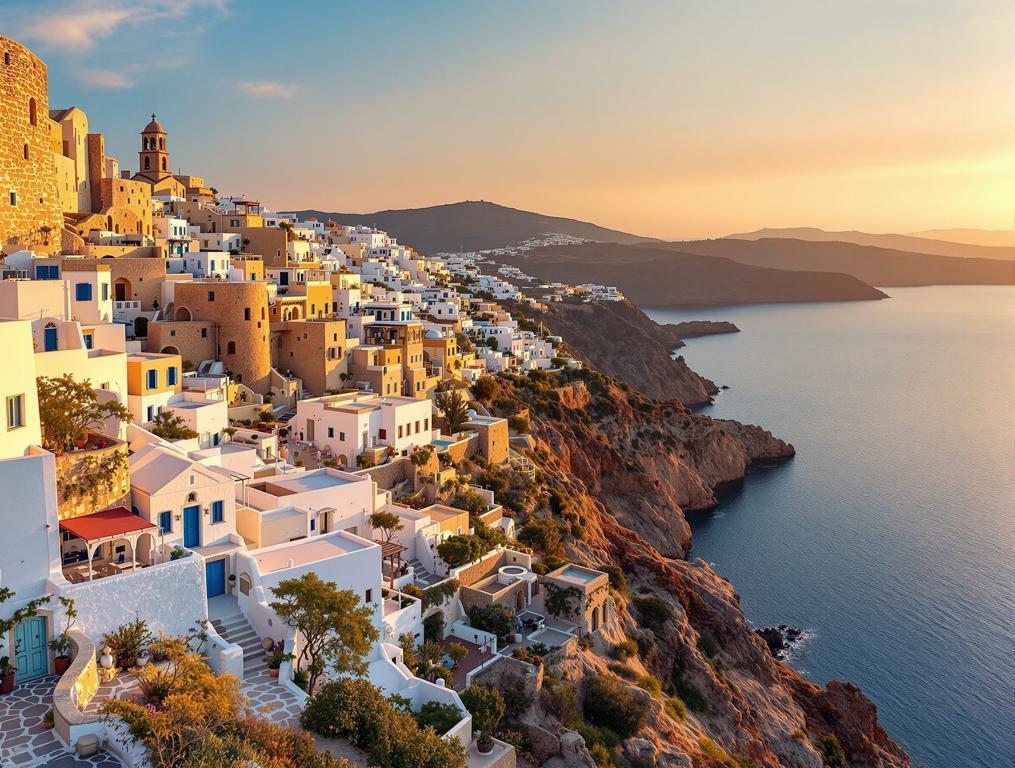The Aegean sun dips behind the hilltop monastery as I step off the ferry onto Patmos. This Greek island of just 3,280 residents stretches a mere 34 square kilometers yet holds secrets that have shaped Western civilization for two millennia. I’ve traveled to dozens of Greek islands, but something feels immediately different here. The crowds that plague Santorini are noticeably absent, replaced by a reverent hush that seems to emanate from the very stones beneath my feet.
My contact, a monastery caretaker who’s lived here for 40 years, had promised this would be Greece’s best-kept secret. Standing in the harbor of Skala with the whitewashed houses of Chora climbing the hill above me, I’m starting to believe him.
Why travelers are abandoning Santorini for this UNESCO-protected island
While 2 million tourists crowd Santorini’s caldera viewpoints each year, Patmos receives fewer than 20,000 annual visitors. This stunning imbalance becomes immediately clear as I walk unimpeded along the waterfront, finding empty tables at seaside tavernas where reservations would be impossible elsewhere.
“The island doesn’t want to change,” explains a shopkeeper arranging handmade olive wood icons in his window. “We’ve watched what happened to other islands. Here, we chose a different path.”
That path led to UNESCO World Heritage status in 1999, protecting both the 11th-century Monastery of Saint John and the Cave of the Apocalypse where, tradition holds, Saint John received visions that became the Book of Revelation. Unlike the typical Greek island experience of beach clubs and infinity pools, Patmos offers something far more profound.
The trend toward authentic Mediterranean experiences extends beyond Greece, with travelers discovering religious heritage in olive-scented landscapes from Provence to Patmos. Yet this island’s spiritual significance remains uniquely potent.
Inside the medieval fortress where apocalyptic visions shaped Western civilization
Climbing 269 meters up winding cobblestone paths to Chora, I enter a medieval labyrinth where 90% of structures are protected historical treasures. The monastery rises like a fortress above the town – because that’s exactly what it was designed to be, protecting monks from pirates who once terrorized the Aegean.
While Patmos joins a select group of religious art preservationists across Europe, similar to Bulgaria’s fresco guardians who maintain thousands of religious paintings across just five churches, the manuscript collection here remains uniquely significant.
“I’ve visited Mont Saint-Michel and Santiago de Compostela, but nowhere feels as untouched as this. It’s like stepping into a living page of history that hasn’t been commercialized or distorted for tourists.”
Unlike some islands that see visitors outnumber locals by staggering ratios, Patmos maintains balance between pilgrimage tourism and authentic island life. The result is an experience increasingly sought by travelers tired of Instagram hotspots and crowded beaches.
Like medieval treasures throughout Europe that maintain their original function across millennia, Patmos’ monastery represents a living connection to its founders. Monks still practice ancient Byzantine chants in chapels where the acoustics haven’t changed since the 11th century.
What the guidebooks won’t tell you
The best way to experience Patmos is via ferry from Kos (the nearest airport, 70 kilometers away). Book the Blue Star line for the most reliable service, but avoid weekend sailings when day-trippers arrive from nearby islands.
Visit the Cave of the Apocalypse before 9am or after 4pm to avoid the few tour groups that do make it here. The cave remains cool at 22°C even in July’s heat, a welcome respite from summer temperatures.
For swimming, skip the main beaches and head to Lambi Beach on the north coast, where multicolored pebbles create a natural artwork that changes with every wave. Nearby taverna Kyma serves the island’s best grilled octopus, caught that morning in waters you can see from your table.
Standing at the monastery’s highest point as sunset bathes Chora in golden light, I understand why Patmos remains protected from the tourism that transformed its neighbors. In a world of manufactured experiences, this island offers something increasingly rare – authenticity that can’t be staged or filtered. My wife Sarah would call it spiritual gravity; that invisible pull that keeps your feet on the ground when your mind wants to float away. Whatever it is, Patmos has it in abundance, and if you’re seeking the Greece that existed before the cruise ships arrived, you’ll find it waiting here.
